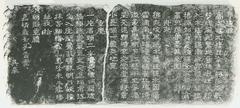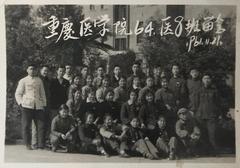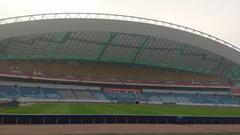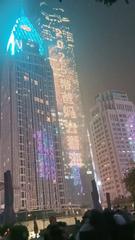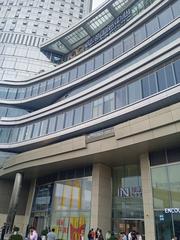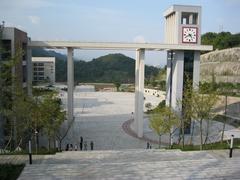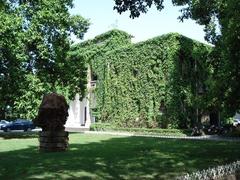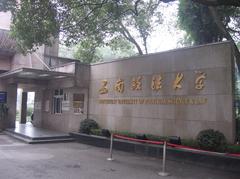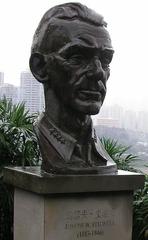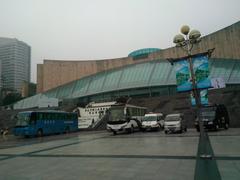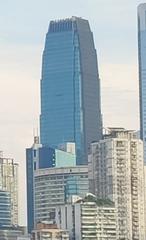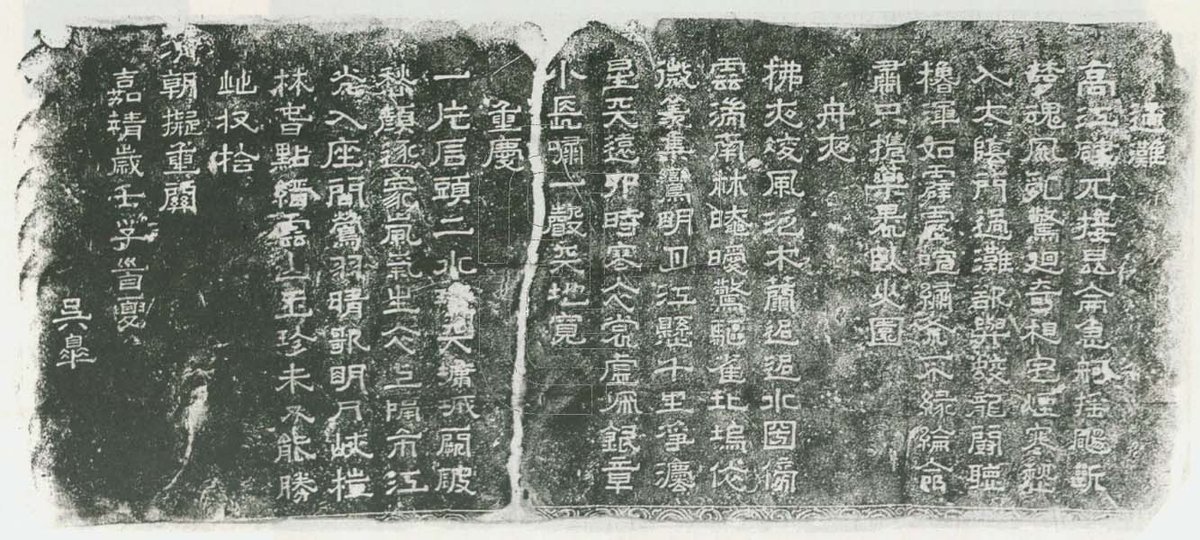
Luohan Temple Visiting Hours, Tickets, and Travel Guide: Exploring Chongqing’s Timeless Buddhist Landmark
Date: 15/06/2025
Introduction
Nestled in the heart of Chongqing’s Yuzhong District, Luohan Temple (罗汉寺, Luóhàn Sì) is a remarkable testament to China’s Buddhist heritage and urban resilience. With origins stretching back to the Northern Song Dynasty (1065 CE), this temple has witnessed nearly a millennium of religious devotion, cultural transformation, and architectural evolution. Today, Luohan Temple stands surrounded by Chongqing’s skyscrapers, serving as both a spiritual sanctuary and a living emblem of the city’s historical continuity (China Highlights, Wikipedia, iChongqing). Whether you are a history enthusiast, spiritual seeker, or curious traveler, this comprehensive guide will help you discover the best of Luohan Temple—including its visiting hours, ticket details, accessibility, must-see highlights, and travel tips.
Historical Overview
Origins and Foundation
Luohan Temple traces its roots to the Northern Song Dynasty, when it was founded by the eminent monk Zuyue in 1065 CE as Zhiping Temple, symbolizing aspirations for peace and stability (China Highlights). Over centuries, the temple evolved into a major center for Buddhist practice and community life in Chongqing.
Dynastic Transformations and Resilience
- Ming Dynasty: Expanded to include the Arhat Hall, home to the celebrated 500 clay arhats (enlightened disciples of Buddha), each uniquely crafted (Travel China Guide).
- Qing Dynasty: Further enhancements included ornate eaves, painted beams, and the majestic Great Buddha Hall, refining the temple’s classic monastic layout.
- 20th Century: The temple suffered extensive damage during the Second Sino-Japanese War, especially in the 1939 bombings. Only the Shanmen (main gate) and Thousand Buddha Rock survived, but concerted restoration efforts by monks and artisans gradually restored much of the temple’s former glory (Chongqing Municipal Government).
Cultural and Religious Significance
Luohan Temple is a vital center for Chan (Zen) Buddhism in southwestern China and serves as the headquarters of the Chongqing Buddhist Association (Lonely Planet). Its influence extends beyond religious practice, inspiring poets, artists, and scholars throughout the centuries.
Architectural Highlights
Layout and Setting
Luohan Temple occupies a tranquil enclave in central Chongqing, with its traditional courtyards and upturned eaves offering a peaceful retreat from the city’s energetic streets (Lonely Planet).
Notable Features
- Entrance Corridor: Features stone carvings of Buddhist motifs, mythical animals, and historic inscriptions.
- Hall of Heavenly Kings: Houses statues of the Four Heavenly Kings, guardians of the temple.
- Mahavira Hall: The spiritual center, home to a grand gilded statue of Sakyamuni Buddha.
- Arhat Hall: The temple’s defining feature, containing over 500 life-sized clay arhats, each with distinct expressions and postures (My Favourite Lens).
- Ancient Stone Inscriptions: Over 400 carved Buddha images, some dating to the Song Dynasty.

The 500 Arhat Statues: Artistic and Spiritual Symbolism
These remarkable clay statues, created during the Qing Dynasty and painstakingly restored after wartime destruction, represent the temple’s spiritual heart (iChongqing; CGTN). Each arhat features unique facial features and gestures, symbolizing the diverse paths to enlightenment in Mahayana Buddhism (Khabar Asia).
Rituals, Festivals, and Living Traditions
Luohan Temple is alive with daily chanting, meditation, and ritual practices led by its resident monks. Local worshippers and pilgrims come to pray for blessings, rub the Laughing Buddha’s belly for luck, and participate in communal festivals, especially during Vesak and Lunar New Year (Trip.com).
Visitor Information
Opening Hours
- Daily: 8:00 AM – 6:00 PM (last entry 5:30 PM)
- Recommended time: Early morning or late afternoon for a quieter experience (Triphobo)
Ticket Prices
- General admission: 30–40 RMB (approx. $1.50–$3 USD)
- Discounts: Students and seniors receive reduced rates; children under 1.2 meters usually enter free.
Accessibility
- Wheelchair access: Main entrance and some areas are accessible, but there are steps and uneven surfaces in parts of the complex.
- Assistance: Staff can provide help if needed; signage is primarily in Chinese.
Getting There
- By Metro: Line 1 or 2 to Jiaochangkou or Xiaoshizi Station, then a short walk.
- By Taxi/Car: Convenient from anywhere in central Chongqing.
- On Foot: Easily reachable from Hongyadong and Jiefangbei.
Facilities
- Tea House: Traditional tea service in a peaceful setting.
- Vegetarian Restaurant: Buddhist cuisine available for visitors.
- Restrooms: Clean and well-maintained within the temple grounds.
Visitor Etiquette and Travel Tips
- Dress modestly: Shoulders and knees should be covered.
- Photography: Allowed outdoors; restricted inside prayer halls and sacred spaces—always check signs or ask staff.
- Behavior: Maintain a respectful and quiet demeanor, avoid touching statues or offerings.
- Payments: Carry RMB cash, as international cards are not widely accepted.
- Language: English signage is limited; translation apps are useful.
What to See and Do
- Admire the 500 Arhats: Wander the Arhat Hall and marvel at the diversity of the clay statues.
- Explore architectural details: From ancient stone inscriptions to red ribbons tied to trees by worshippers.
- Participate in cultural rituals: Join festivals, tea ceremonies, or meditation sessions.
- Nearby attractions: Visit Hongyadong, the Liberation Monument, and the Yangtze River Cableway for a full day of Chongqing exploration (Wander With Lou).

Frequently Asked Questions (FAQ)
Q1: What are Luohan Temple’s visiting hours?
A1: The temple is open daily from 8:00 AM to 6:00 PM (last entry at 5:30 PM).
Q2: How much is admission?
A2: Tickets range from 30–40 RMB for adults, with discounts for students and seniors.
Q3: Is the temple accessible for those with limited mobility?
A3: The main entrance and certain areas are accessible, though some steps and uneven surfaces remain.
Q4: How do I reach the temple via public transport?
A4: Take Metro Line 1 or 2 to Jiaochangkou or Xiaoshizi Station, then walk to the temple.
Q5: Can I take photographs inside?
A5: Photography is allowed in outdoor areas, but restricted in sacred halls. Always follow posted guidelines.
Summary and Call to Action
Luohan Temple stands as a living symbol of Chongqing’s spiritual heritage, resilience, and architectural artistry. Its 500 clay arhats, elegant halls, and centuries-old inscriptions invite reflection and wonder, while its ongoing rituals and festivals connect visitors to China’s enduring Buddhist traditions. With its central location, accessible facilities, and proximity to other major attractions, Luohan Temple is an essential stop for anyone seeking to experience Chongqing’s cultural heart (CGTN, Trip.com).
Plan your visit today: Download the Audiala app for guided tours, the latest updates, and insider tips. Explore our related guides to make the most of your journey through Chongqing’s historical and spiritual landmarks.
Sources and Further Reading
- China Highlights: Luohan Temple in Chongqing
- Wikipedia: Luohan Temple (Chongqing)
- iChongqing: Luohan Temple
- Lonely Planet: Luohan Temple
- My Favourite Lens: Luohan Temple Chongqing
- Triphobo: Luohan Temple
- Wander With Lou: Best Things to Do in Chongqing
- CGTN: Chongqing Luohan Temple
- Khabar Asia: Luohan Temple
- Chongqing Municipal Government Official Website
